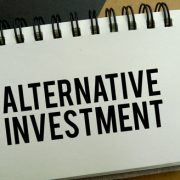What if I Want to Invest in Traditional Stock Investments with a Self-Directed IRA?
The Self-Directed IRA is a powerful tool for non-traditional retirement investments: real estate, precious metals, tax liens, private lending, and more. But what if you want to use the freedom of a Self-Directed IRA in a far more traditional way? What if you want to hold stocks, stock funds, and bonds within your Self-Directed IRA? Is it possible? Is it a good idea? And what are some of the common pitfalls you’ll want to know before getting started?
Using Traditional Investments Within a Self-Directed IRA
For starters: yes, you can hold traditional investments within an IRA. A “Self-Directed IRA,” after all, is not a unique account. Self-directing a Roth IRA means you are using a Roth IRA. Self-Directing a Traditional IRA means you are using a Traditional IRA. You can hold stocks and bonds within these retirement accounts, regardless of your overall strategy.
That brings us to a second question: why? People tend to expand to Self-Directed IRAs because they’re seeking additional portfolio diversification. For many investors, an IRA is a way to get away from the traditional investments they have been using, making sure that their nest egg casts a wider net on a broader range of asset classes.
However, it’s worth noting that there are some areas in which self-direction and a traditional retirement strategy might overlap.
Buying Private Stock with a Self-Directed IRA
Use a Traditional IRA with a traditional brokerage offering and you will likely find that you only have traditional options. You can buy public stocks, mutual funds, and the like—but what if you have access to private stock that could potentially yield you even higher returns than the stock market index?
Investing in private stock for retirement might seem similar to buying any type of stock, but it’s generally a “non-traditional asset” that works best with a Self-Directed IRA.
Known as Self-Directed IRA investing for private companies, this strategy has a few rules that don’t apply with public stocks:
- You cannot invest in a private company that you or any “prohibited” person owns or controls. This is a limitation set forth by the IRS to discourage people from linking their retirement investment accounts with personal benefits.
- When you earn income through this investment, it should be paid to your IRA, it should go according to its percentage of ownership. For example, if your IRA owns 30% of the company, it should receive 30% of all income.
- The company management must provide an annual “Fair Market Valuation” that is then to be submitted to your Self-Directed IRA administration firm. For example, if you were working with American IRA, it would be submitted to American IRA.
Using More “Traditional” Style Assets While Self-Directing
Although it’s possible to use traditional retirement assets in a self-directed account, the reason people open self-directed accounts is to gain access to a completely different way of investing for retirement. It’s extra paperwork, to be sure, but it also affords you the freedom to invest in assets like real estate and private companies to build retirement cash flow.
In other words, a Self-Directed IRA can be a great tool for building wealth—and one that is not dependent on the stock market’s returns.
This gives Self-Directed IRA holders a tremendous amount of confidence in their retirement investments. They no longer have to watch the daily returns on their mutual funds to feel financial peace. They can instead turn to a broader range of assets that can withstand different types of economic “weather.”
Interested in learning more about Self-Directed IRAs? Contact American IRA, LLC at 866-7500-IRA (472) for a free consultation. Download our free guides or visit us online at www.AmericanIRA.com.








